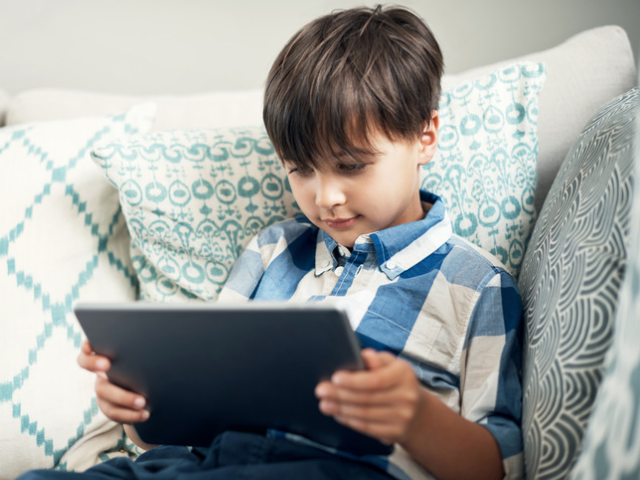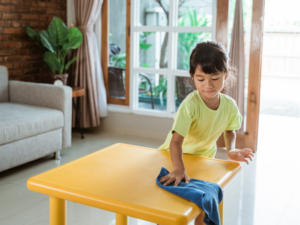Screen time for kids. It’s one of the biggest topics parents think about when it comes to their child’s development and health. On the one hand, technology is a necessary part of reality and existence in the 21st century. On the other hand, it has completely taken over parts of our lives. It has the potential to become addictive and harmful. How did we get here?
As people, we have determined that there are 3 basic human needs or desires. The digital world has capitalized on these needs to create mass consumption and use of technology.
- The need for social connection
- Neophilia – our need to explore and discover new things
- Our love for archetypal experiences (Hero’s Journey, etc.)
Consequently, these 3 drives we all have, make social media, internet use, video games, and other screen-based experiences SO addicting. We feel compelled to search for endless information on the internet (for a child, to constantly change the YouTube screen in search of our favorite PinkFong song). Heroe and warriors in our video games inspire us. Without social media’s constant affirmation and perceived connection, we feel lost and alone. It’s no wonder our screen time for kids has increased.
How Increased Screen Time for Kids Affects Them
Furthermore, these devices are designed to be addicting, INTENTIONALLY. The creators themselves will be the first to tell you. Former Google design ethicist Tristan Harris and many others have described how apps are designed to hook you in, give you dopamine kicks and instant rewards, and bring you back for more. Facebook’s Sean Parker in 2017 said, “Facebook literally changes your relationship with society, with each other. God only knows what it’s doing to our children’s brains. These devices exploit a vulnerability in human psychology to form addiction. We understood this consciously, and we did it anyway”.
Not surprisingly, many executives and engineers at Yahoo, Apple, and Google send their children to a no-tech Waldorf school in CA. This school eliminates any screen time for kids. They clearly know something we don’t know about the products they are pushing into our children’s schools and homes while limiting them in their schools and homes.
Accordingly, every time we use a cell phone or tablet and interact with it in some way (we do something, and something happens in response), dopamine is released. Dopamine is the feel-good neurotransmitter in our body and plays the largest role in addiction. The addictive potential of a substance or behavior depends on how much dopamine is activated during that behavior or use of the substance.
When we eat food we really enjoy: Dopamine is released at about 50% above normal.
Sex: 100%
Playing video games and other highly interactive media: 100%
Doing Cocaine: 350%
While there are obvious physical and emotional differences between having sex and your child playing a game on her iPad, the dopamine released is about the same. Dopamine increases the risk of addiction if released for hours at a time. This is why taking breaks from screen use is so important. It allows the brain and body to absorb the dopamine, enjoy the positive feelings/effects, rest, and begin again. Addiction experts are very concerned that if children develop tech addiction young, this will prime their brains to have addictive tendencies. Unfortunately, this addiction can affect their lives with other activities or substances.
Biological Impact of Screen Time for Kids
Research is finding that there are significant impacts of increased screen use in our children beyond concerns for addiction. A study in 2019 published in JAMA Pediatrics scanned the brains of children 3-5 years old. The researchers found that the children who used screens more than the recommended 1 hour a day without parental involvement had lower levels of development in the brain’s white matter.
White matter is the myelin sheath that protects the neurosynaptic connections of the grey matter in our brains. It joins all four lobes of the brain, including the limbic system, which is responsible for emotional control. It is developed at a rapid pace during childhood as children make more and more connections in their brains. White matter doesn’t fully form and develop until at least the age of 20. This white matter is KEY to developing language, literacy, and cognitive skills.
Normally, our brain does begin to prune the connections it has made in the teenage years after a child has developed a rich structure of connections. This pruning is a refining process and helps us develop higher executive functioning skills that are effective and strong. Researchers have found that children in a longitudinal study analyzing screen use demonstrate premature pruning around the ages of 7-9. This should be concerning. Pruning the brain’s connections up to 10 years early? What effect does that have on our children’s learning, problem-solving skills, memories, and executive function?
Screens are also hyper-arousing and affect the HPA axis in our brains. HPA stands for Hypothalamus – Pituitary – Adrenal Axis. This system is responsible for our fight-or-flight response, which increases our blood pressure, dilates our pupils, and releases cortisol. Unfortunately, hour after hour of this exposure leads to dysregulation. This dysregulation causes kids to look ‘wired and tired,’ mimic symptoms of ADHD, and have increased moodiness and aggression.
And finally, increased screen time for kids leads to decreased time doing other things. Consequently, kids do less playing outside and exercising, problem-solving with toys and other materials, integrating their sensory systems through movement and play, and practicing social skills with the people around them.
Reducing Screen Time For Kids Help
However, despite all of this, I have some great news. Researchers have found that these negative effects are significantly reduced if the child watches TV rather than holds a phone or iPad. This is because there is physical and psychological separation from the screen. The child cannot manipulate the screen, which is the primary source of dopamine release. Alternatively, having physical distance from the screen also reduces the risk of eye strain, yet another side effect doctors and scientists are discovering in this digital age. Also, other good news is that if a parent engages with the child during screen use (referencing the real world with the things on the screen, talking about what is happening, etc.), the negative effects are also decreased.
Now that you have all this information, it’s time to take action! Below are 5 suggestions for you as a parent to ensure that your child has a balanced and healthy relationship with technology.
- Firstly, prevention is KEY. If we as adults can support the children in our lives at an early age to decrease screen time and find balance NOW, it will be much easier to continue that balance and empower them to use tech in healthy ways in the future on their own. Addiction experts and pediatric health groups recommend delaying daily use and access to a tablet or smartphone until 10. 10 years old. I know. That seems like such a long time. But if we make this our goal with the expectation that we will fall short at times, I think we set our children up for a better developmental track and healthier relationship with screens and tech.
- Further, screens offer us the ability to connect with loved ones far away, attend school literally ANYWHERE, and create new things. As an Occupational Therapist, I believe that screens are never better than hands-on, real-life experiences that offer sensory input, real-time feedback for motor development, and rich social interactions. This is especially crucial for our neuro-diverse children, who are much more likely to experience sensory overload from excessive screen time and who often need more modeling of social interactions, motor skills, and communication.
- Also, LET KIDS BE BORED. It’s so important! It will let them daydream, pretend, explore, and connect with others. If you have a child who often needs more structure for play, set up spaces for guided play and exploration with an adult or peers. If a screen is present, engage with the activity on the screen with the child, talk about it, and connect it with things and experiences outside of the screen.
- Furthermore, practice what you preach. We have to model healthy relationships with our smartphones and computers. Accordingly, if a child observes their caregiver constantly looking at their phone, they will assume that is also how they should act and interact in the world.
- Talk about screen use early and often. Get the whole family involved. Make it a positive conversation about finding balance and empowerment, not shame and judgment.




